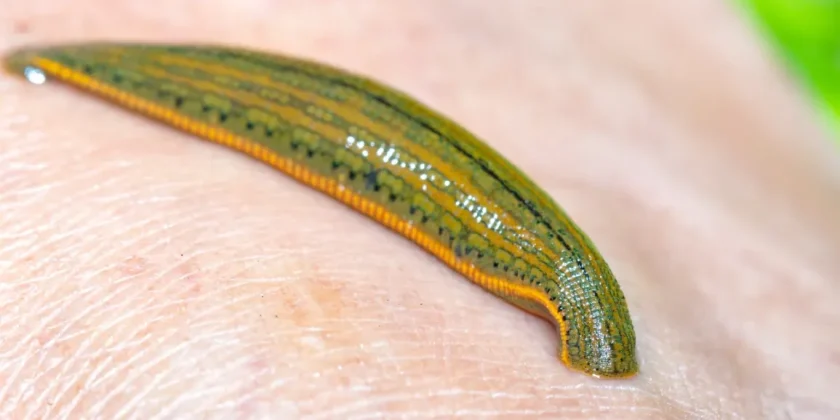Dealing with Leech Bites: Best Practices for Treatment
Leeches are intriguing animals, often encountered in damp habitats like forests, swamps or watersports. The majority of leech bites are painless, but they may result in mild bleeding. Understanding how to prevent leech bites is important for both hikers and people receiving medical leech therapy. These are the most efficient ways to heal leech bites and make a complete recovery.
1. Removing the Leech Safely
Don’t lift it off: If you remove a leech too suddenly, its mouthparts will remain embedded in the skin and will increase the chance of infection.
Secure your approach: Place salt, vinegar or a torch close to the leech to make it let go. Or remove it by carefully snatching it from the narrow end of its body with the side of a credit card or fingernail.
2. Cleaning the Wound
Clean the bite site with soap and water to remove any lingering bacteria or dirt.
Clean the site with a towel or clean cloth.
3. Stopping the Bleeding
Leech saliva contains anticoagulants and can lead to prolonged bleeding. Press gently with a fresh cloth or gauze to halt the bleeding.
Apply a styptic pencil or antiseptic cream if necessary, to promote clotting.
4. Preventing Infection
Dress the bite site with an antiseptic cream.
Cover the injury with a clean adhesive bandage.
Keep an eye on the wound for redness, swelling or pus.
5. Managing Discomfort
If the bite is itchy, use an over-the-counter hydrocortisone cream or take an antihistamine.
Don’t scratch the bite to avoid causing irritation or infection.
6. Seeking Medical Attention
If the wound becomes infected or if you develop unusual symptoms such as fever, get yourself to the doctor right away. Anyone allergic to leech saliva should visit a doctor if you feel that you have developed an allergic reaction, including breathing problems or swelling.
A: Most leech bites are not dangerous and heal on their own. However, they can cause prolonged bleeding and minor discomfort due to the anticoagulants in leech saliva. In rare cases, allergic reactions or infections may occur.
A: Wear protective clothing, such as long sleeves and pants, and use insect repellents that contain DEET. Avoid wading in leech-prone areas, such as stagnant water or marshes.
A: It is not recommended to pull a leech off forcefully, as this can leave its mouthparts in your skin. Instead, use salt, vinegar, or a blunt object to safely detach it.
A: Leech bites typically heal within one to two weeks. Proper wound care can speed up the healing process and reduce the risk of infection.
A: In general, leeches do not transmit diseases to humans. However, improper wound care can lead to secondary infections.
A: Apply firm pressure to the wound for several minutes. If the bleeding persists, seek medical advice, as some individuals may have a mild reaction to the anticoagulants in leech saliva.
By following these best practices, you can manage leech bites effectively and minimize discomfort or complications. Being prepared and informed ensures that your outdoor adventures or therapeutic experiences remain safe and enjoyable.



